Cloisonné enamel from the Collection of Dr Kenneth Lawley sold at Sotheby's London, 1st november 2023
Lot 74. Property from the Collection of Dr Kenneth Lawley (1937-2023). A rare cloisonné enamel 'lotus' bell-shaped bowl, Ming dynasty, 16th century. Diameter 15.8 cm. Lot Sold 20,320 GBP (Estimate 10,000 - 15,000 GBP). © Sotheby's 2023
Provenance: Anthony Carter, London, 24th November 1998.
Literature: The present bowl is notable for its deep bell shape, as well as the use of turquoise green, which showcases the development of the colour palette during the 16th century. Similar use of the turquoise enamel can be found in pieces in other forms, see, for example, a gui shaped censer with similar lotus scrolls decoration, illustrated in Harry Garner, Chinese and Japanese Cloisonné Enamels, London, 1970, pl. 30A.
Compare a closely related example, illustrated in Harry Garner, op. cit., pl. 30B, and sold in these rooms, 12th November 1974, lot 150; a bowl in a similar shape, but decorated with a shou (longevity) character to the interior, included in the exhibition Cloisonné. Chinese Enamels from the Yuan Ming and Qing Dynasties, Bard Graduate Center, New York, 2011, cat. no. 38.
Lot 75. Property from the Collection of Dr Kenneth Lawley (1937-2023). A rare cloisonné enamel 'lotus' ewer and cover, Ming dynasty, 16th century. Length 26.2 cm. Lot Sold 101,600 GBP (Estimate 10,000 - 15,000 GBP). © Sotheby's 2023
Provenance: Anthony Carter, London, 28th February 2003.
Note: Compare a closely related example, from the Pierre Uldry Collection, included in the exhibition Chinesisches Cloisonné Die Sammlung Pierre Uldry, Rietberg Museum, Zurich, 1985, cat. no. 99; and another, sold at Christie's London, 6th November 2013, lot 967. Compare also three related examples in similar form but decorated with Buddhist lions, one illustrated in op. cit., cat. no. 98; the other sold in these rooms, 11th July 1972, lot 27; and the third ewer, sold at Christie's New York, 1st December 1983, lot 772.
Lot 76. Property from the Collection of Dr Kenneth Lawley (1937-2023). A rare cloisonné enamel mandala, Ming dynasty, 16th century. Diameter 25.2 cm. Lot Sold 38,100 GBP (Estimate 8,000 - 12,000 GBP). © Sotheby's 2023
Provenance: A & J Speelman, London, 6th November 2013..
Note: Compare a similar example, in the Metropolitan Museum of Art, New York, exhibited in Cloisonné. Chinese Enamels from the Yuan Ming and Qing Dynasties, Bard Graduate Center, New York, 2011, cat. no. 29; one preserved in the Cleveland Museum of Art, Cleveland, illustrated in John C. Huntington et. al., The Circle of Bliss. Buddhist Meditational Art, Chicago, 2003, pl. 42; and another in the Freer Gallery, National Museum of Asian Art, Washington, accession no. F1998.295.
Lot 77. Property from the Collection of Dr Kenneth Lawley (1937-2023). A cloisonné enamel 'double-vajra' box and cover, Ming dynasty, 16th century. Diameter 21.3 cm. Lot Sold 12,065 GBP (Estimate 8,000 - 12,000 GBP). © Sotheby's 2023
Provenance: Jan van Beers Oriental Art, London, 4th October 2007.
Note: This cloisonné enamel box and cover is notable for the double-vajra depicted at the centre. This motif symbolises the foundation of the universe of mount Meru, representing the principle of absolute stability, characterized by the solidity of the Mother Earth element. This ornament indicates the box may have been commissioned to be used in ritual practices within the Ming imperial court. Compare a closely related example, in the Metropolitan Museum of Art, New York, accession no. 29.110.90a.
Vajra patterns are frequently depicted in cloisonné pieces, see, for example, a bowl with double vajra patterns to the interior, in the Pierre Uldry Collection, exhibited in Chinesisches Cloisonné Die Sammlung Pierre Uldry, Rietberg Museum, Zurich, 1985, cat. no. 88; a small lobed dish, sold at Christie's Paris, 12th December 2019, lot 91; and a flask decorated with a vajra on the body, included in the exhibition Cloisonné. Chinese Enamels from the Yuan Ming and Qing Dynasties, Bard Graduate Center, New York, 2011, cat. no. 53.
Lot 78. Property from the Collection of Dr Kenneth Lawley (1937-2023). A rare cloisonné enamel pear-shaped ewer and cover, Ming dynasty, Jiajing period (1522-1566). Height 33 cm. Lot Sold 25,400 GBP (Estimate 20,000 - 30,000 GBP). © Sotheby's 2023
Provenance: Jan van Beers Oriental Art, London, 4th October 2007.
Cie. de la Chine et des Indes, Paris, 7th December 1970.
Bluett & Sons Ltd., London.
Collection of J. Chase Gilmore.
Anthony Carter, London, 8th August 2000.
Exhibited: The Art Institute of Chicago, Chicago, 1974.
Note: Originating with Islamic metal ewers, the form of the present piece was widely adopted during the Ming dynasty (1368-1644) with reproductions made in various materials, see, for example, several gold, silver and jade ewers, excavated from Ming tombs, illustrated in Yang Zhishui, 'Jinpingmei cihua zhong de jiu shi' [About wine in the novel Jin Ping Mei], Forbidden City, Beijing, 2016, pls. 21, 22 and 31.
The characteristic raised heart-, or peach-shaped medallion on the body is in Chinese literature sometimes described as representing a ginkgo leaf. This specific design is detailed in the Qing book Tianshui bingshan lu [A record of heavenly waters melting the iceberg], which lists the property of the wealthy but fallen Ming Senior Grand Secretary Yan Song (1480-1567). Ewers with such medallions decorated with lotus, like the present piece, are termed jinlian xingye hu (ginkgo leaf lotus decoration ewers).
Compare a closely related example, also with a Jingtai nian zhi seal mark from the E.T. Chow (1910-1980) collection, sold in our Hong Kong rooms, 19th May 1981, lot 612, and exhibited in Chinesisches Cloisonné. Die Sammlung Pierre Uldry, Rietberg Museum, Zurich, 1985, cat. no. 97, from the Pierre Uldry Collection; another decorated with the mythical beast qilin, in the British Museum, London is illustrated in Harry Garner, Chinese and Japanese Cloisonné Enamels, London, 1970, pl. 42; and one decorated with the Eight Buddhist Emblems, in the Victoria & Albert Museum, London, published in Basil William Robinson, Chinese Cloisonné Enamels, London, 1972, pl. 4. Compare also a related piece with pear-shaped body and hexagonal rim, included in the exhibition Cloisonné. Chinese Enamels from the Yuan Ming and Qing Dynasties, Bard Graduate Center, New York, 2011, cat. no. 58.
Lot 79. Property from the Collection of Dr Kenneth Lawley (1937-2023). A cloisonné enamel 'lotus' zhadou, Ming dynasty, Jiajing period (1522-1566). Height 12,4 cm. Lot Sold 2,540 GBP (Estimate 4,000 - 6,000 GBP). © Sotheby's 2023
Provenance: Anthony Carter, London, 2004.
Note: Compare a slightly smaller zhadou with the same decoration, from the Pierre Uldry Collection, included in the exhibition Chinesisches Cloisonné. Die Sammlung Pierre Uldry, Rietberg Museum, Zurich, 1985, cat. no. 86; another decorated with buddhist lions, from the collection of David David-Weill (1871-1952), now in the Musée des arts décoratifs, Paris, exhibited in Cloisonné: Chinese enamels from the Yuan, Ming, and Qing Dynasties, Bard Graduate Center, New York, 2011, cat. no. 3.19; and a third example from the collection of Caramoor Center For Music And The Arts, sold in our New York rooms, 15th March 2016, lot 129.
Lot 81. Property from the Collection of Dr Kenneth Lawley (1937-2023). A cloisonné enamel meiping, Ming dynasty, 16th-17th century. Height 29 cm. Lot Sold 19,050 GBP (Estimate 10,000 - 15,000 GBP). © Sotheby's 2023
Provenance: The Oriental Art Gallery Limited, London, 6th June 1995.
Note: Compare a larger meiping in the National Palace Museum, Taipei, exhibited in the Mystery of the Jingtai Cloisonné Unveiled, National Palace Museum, Taipei, cat. no. I-30-1; another slightly larger meiping, illustrated in Gunhild Gabbert Avitabile, Die Ware aus dem Teufelsland. Chinesische und japanische Cloisonné- und Champleve- Arbeiten von 1400 bis 1900 [Ware of the Devil's Country : Chinese and Japanese cloisonné and champlevé from 1400 - 1900], Hannover, 1981, pl. 14; and a third example from the Pierre Uldry Collection, included in the exhibition Chinesisches Cloisonné. Die Sammlung Pierre Uldry, Rietberg Museum, Zurich, 1985, cat. no. 122. See also another meiping sold in our New York rooms, 17th March 2009, lot 83.
Lot 82. Property from the Collection of Dr Kenneth Lawley (1937-2023). A cloisonné enamel 'landscape' box and cover, Ming dynasty, 16th-17th century. Diameter 25.7 cm. Lot Sold 114,300 GBP (Estimate 20,000 - 30,000 GBP). © Sotheby's 2023
Provenance: Christie's London, 10th May 1993, lot 37.
Gerard Hawthorn, London, 21st May 2002.
Note: The cloisonné technique was introduced to China in the early 15th century, but it was not until the mid-Ming that craftsman embarked on the depiction of complex and detailed painting-like scenes with figures in landscape settings. Cloisonné covered boxes with such decoration remained, however, extremely rare. In form and design, this piece is referencing lacquer wares; see, for example, a lacquer box of the similar size and decorated with similar scene, illustrated in John Figgess, 'Ming and Pre-Ming Lacquer in the Japanese Tea Ceremony', Transaction of the Oriental Ceramic Society, 1967-69, vol. 37, pl. 55.
One closely related example from the collection of Sir Harry Garner (1891-1977), is now housed in the British Museum, London, accession no. 1977,0718.2; and another, with a similar scene but surrounded by the Three Friends of Winter, is preserved in the Palace Museum, Beijing, illustrated in Gugong Bowuyuan cangpin daxi. Falangqi bian / Compendium of Collections in the Palace Museum. Cloisonné, vol. 1, Beijing, 2011, lot 157.
More common are covered boxes decorated with flower motifs, such as an example decorated with lotus in the centre and various floral scrolls at the sides, also in the Palace Museum, Beijing, illustrated in Zhongguo jinyin boli falang qi quanji. Falangqi [Complete books of gold and silver, glass and cloisonné wares], vol. 5, Shijiazhuang, 2002, pl. 124. Compare also a related box and cover decorated with peony and grapes, included in the exhibition Cloisonné. Chinese Enamels from the Yuan, Ming and Qing Dynasties, Bard Graduate Center, New York, 2011, cat. no. 3.10.
Lot 83. Property from the Collection of Dr Kenneth Lawley (1937-2023). A cloisonné enamel 'lotus pond' meiping, Ming dynasty, 16th-17th century. Diameter 24 cm. Lot Sold 8,890 GBP (Estimate 10,000 - 15,000 GBP). © Sotheby's 2023
the base cast with an apocryphal Jingtai four character seal mark.
Provenance: The Oriental Art Gallery Limited, London, 17th May 1993.
Note: Compare a larger example preserved in the National Palace Museum, Taipei, included in the museum's exhibition Ming Qing Falangqi Zhanlan Tulu [Enamel Ware in the Ming & Ch'ing Dynasties], 1999, cat. no. 10; another against a dark blue-ground, from the collection of David David-Weill (1871-1952), and now in the Musée des arts décoratifs, Paris, exhibited in Cloisonné: Chinese enamels from the Yuan, Ming, and Qing Dynasties, Bard Graduate Center, New York, 2011, cat. no. 3.9; and a third example, exhibited in the Fine and Rare Chinese Works of Art and Ceramics, Winter Exhibition, Roger Keverne Ltd., London, 2005, cat. no. 56.
Lot 84. Property from the Collection of Dr Kenneth Lawley (1937-2023). A cloisonné enamel 'lotus' jar, Ming dynasty, 16th century. Height 14.3 cm. Lot Sold 30,480 GBP (Estimate 6,000 - 8,000 GBP). © Sotheby's 2023
Provenance: Roger Keverne Ltd., London, 6th November 2004.
Lot 85. Property from the Collection of Dr Kenneth Lawley (1937-2023). A cloisonné enamel 'loquat and lotus' tripod dish, Ming dynasty, 16th century. Diameter 16 cm. Lot Sold 17,780 GBP (Estimate 6,000 - 8,000 GBP). © Sotheby's 2023
Provenance: Gerald Hawthorn, London, 20th February 2007.
Lot 87. Property from the Collection of Dr Kenneth Lawley (1937-2023). A cloisonné enamel grape wines' hu-form vase, Ming dynasty, 16th century. Height 26.3 cm. Lot Sold 5,715 GBP (Estimate 8,000 - 12,000 GBP). © Sotheby's 2023
Provenance: Roger Keverne Ltd., London, 14th October 2001
Lot 88. Property from the Collection of Dr Kenneth Lawley (1937-2023). A cloisonné enamel 'lotus' tripod censer, Ming dynasty, 16th century. Width 14.2 cm. Lot Sold 5,715 GBP (Estimate 8,000 - 12,000 GBP). © Sotheby's 2023
Provenance: Roger Keverne Ltd., London, 26th May 2009.
Lot 89. Property from the Collection of Dr Kenneth Lawley (1937-2023). A cloisonné enamel 'grape vine' censer, Ming dynasty, 16th-17th century. Width 16.5 cm. Lot Sold 15,240 GBP (Estimate 6,000 - 8,000 GBP). © Sotheby's 2023
Provenance: Roger Keverne Ltd., London, 26th September 2018.
Lot 90. Property from the Collection of Dr Kenneth Lawley (1937-2023). A very rare large cloisonné enamel 'Buddhist lion' rectangular tray, Ming dynasty, Wanli period (1573-1620). Length 47.8 cm. Lot Sold 33,020 GBP (Estimate 20,000 - 30,000 GBP). © Sotheby's 2023
the side with an apocryphal Jingtai four-character mark.
Provenance: Collection of Mrs Harry Mitchell.
Christie's London, 25th November 1974, lot 136.
Hugh M. Moss, London.
Ben Janssens Oriental Art, London, 29th March 2001.
Note: Buddhist lions playing with beribboned balls were a popular motif of the Ming dynasty (1368-1644) in various media and the vibrant colouration and vigorous representation of the animals here are characteristic of the period's imperial cloisonné of the Wanli period (1573-1620). In Buddhism, lions are considered as protectors of the doctrine, embodying both power and authority through their fierce and majestic appearance. Lions are not native to China, but in the early Ming period real lions were repeatedly presented to the court as gifts by foreign embassies and subsequently appeared in the decorative repertoire of various imperial workshops; see, for example, a blue and white jar attributed to Xuande period, adorned with Buddhist lions playing with a ball, sold in our Hong Kong rooms, 3rd October 2021, lot 3635; and a Tibetan Buddhist vase a design of four playing lions, preserved in the Palace Museum, Beijing and attributed to mid-Ming period, illustrated in Gugong Bowuyuan cangpin daxi. Falangqi bian / Compendium of Collections in the Palace Museum. Cloisonné, vol. 1, Beijing, 2011, pl. 68.
Compare two cloisonné trays decorated with similar motifs, but of narrower shape, one sold in our London rooms, 24th February 1970, lot 32, the other, in the Pierre Uldry Collection, exhibited in Chinesisches Cloisonné Die Sammlung Pierre Uldry, Rietberg Museum, Zurich, 1985, cat. no. 85. See also a large tray which was believed to have been used for playing the double-six game, decorated with a group of Buddhist lions chasing a beribboned ball, preserved in the Palace Museum, Beijing, attributed to the early Ming dynasty, illustrated in op. cit, pl. 52.
Lot 91. Property from the Collection of Dr Kenneth Lawley (1937-2023). A cloisonné enamel 'Buddhist lion' bowl, Ming dynasty, 16th century. Diameter 20.2 cm. Lot Sold 3,810 GBP (Estimate 6,000 - 8,000 GBP). © Sotheby's 2023
Provenance: Alistair Sampson Antiques Ltd., London, 16th June 1995.
Lot 92. Property from the Collection of Dr Kenneth Lawley (1937-2023). A cloisonné enamel 'mythical beast' bowl, Ming dynasty, 16th century. Diameter 19.8 cm. Lot Sold 7,620GBP (Estimate 6,000 - 8,000 GBP). © Sotheby's 2023
Provenance: A & J Speelman, London, 5th November 2012.
Lot 93. Property from the Collection of Dr Kenneth Lawley (1937-2023). A cloisonné enamel 'Buddhist lion' dish, Ming dynasty, 16th-17th century. Diameter 29.9 cm. Lot Sold 4,064 GBP (Estimate 6,000 - 8,000 GBP). © Sotheby's 2023
Provenance: Roger Keverne, London, 9th October 2012.
Note: Compare a dish of this type, decorated with two dragons in the Metropolitan Museum of Art, New York, accession number: 29.110.96; and another, centred with a bird, from the Pierre Uldry Collection, included in the exhibition Chinesisches Cloisonne. Die Sammlung Pierre Uldry, Rietberg Museum, Zurich, 1985, cat. no. 130.
Among the animals associated with Buddhism, the lion is one of the most commonly portrayed. Lions were not indigenous to China but were imported as exotic gifts for the Han (206 BC- AD 220) and Tang (618-907) courts. The symbolism associated with the lion developed with the introduction and spread of Buddhism in China after the fall of the Han dynasty.
Lot 94. Property from the Collection of Dr Kenneth Lawley (1937-2023). A cloisonné enamel 'bird and flower' box and cover, Ming dynasty, 16th century. Diameter 13 cm. Lot Sold 8,255 GBP (Estimate 4,000 - 6,000 GBP). © Sotheby's 2023
Provenance: Anthony Carter, London, 20th April 1999.
Lot 95. Property from the Collection of Dr Kenneth Lawley (1937-2023). A cloisonné enamel 'bird and flower' box and cover, Ming dynasty, 16th century. Diameter 12.7 cm. Lot Sold 38,100 GBP (Estimate 8,000 - 12,000 GBP). © Sotheby's 2023
Provenance: J.J. Lally & Co., New York.
Note: Compare two related examples, decorated with a Makara dragon, one sold at Bonhams Hong Kong, 2nd December 2021, lot 14; the other sold in these rooms, 17th December 1996, lot 194. Compare also a larger dish decorated with a dragon of related design, from the collection of Pierre Uldry, illustrated in Chinesisches Cloisonné Die Sammlung Pierre Uldry, Rietberg Museum, Zurich, 1985, cat. no. 71.
Lot 96. Property from the Collection of Dr Kenneth Lawley (1937-2023). A cloisonné enamel 'chilong' dish, Late Ming dynasty. Diameter 24 cm. Lot Sold 5,715 GBP (Estimate 4,000 - 6,000 GBP). © Sotheby's 2023
Provenance: Collection of Miss A. C. Kemp.
Sotheby's London, 7th May 1963, lot 84.
John Sparks Ltd., London.
Bluett & Sons Ltd., London.
Anthony Carter, London, 16th September 1993.
Literature: Sir Harry Garner, 'Chinese and Japanese Cloisonné Enamels', The Arts of The East, London, 1962, pl. 51B.
Exhibited: Chinese Decorative Arts, Bluett & Sons Ltd., London, 1974, cat. no. 68.
Sotheby's. Important Chinese Art, London, 1st november 2023

/https%3A%2F%2Fprofilepics.canalblog.com%2Fprofilepics%2F1%2F0%2F100183.jpg)
/https%3A%2F%2Fstorage.canalblog.com%2F03%2F02%2F119589%2F96711876_o.jpg)
/https%3A%2F%2Fstorage.canalblog.com%2F11%2F31%2F119589%2F94773502_o.jpg)
/https%3A%2F%2Fstorage.canalblog.com%2F20%2F83%2F119589%2F94772815_o.jpg)
/https%3A%2F%2Fstorage.canalblog.com%2F26%2F72%2F119589%2F75604929_o.jpg)
/https%3A%2F%2Fstorage.canalblog.com%2F59%2F60%2F119589%2F26458628_o.jpg)




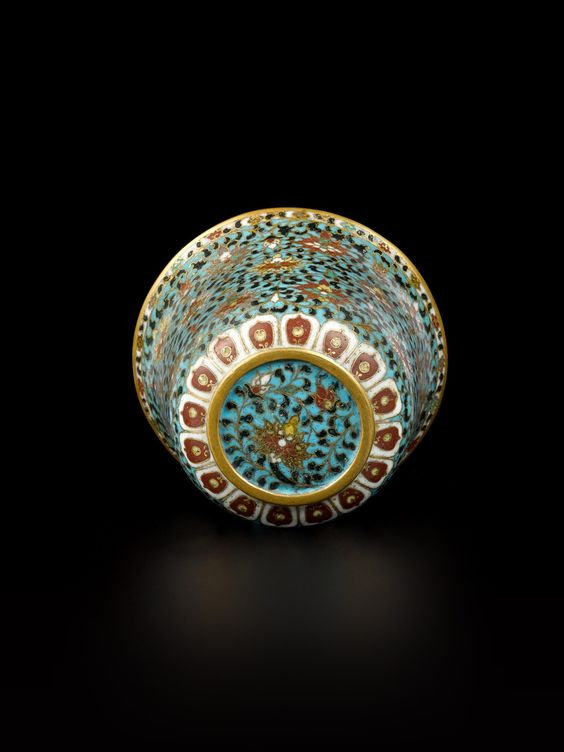

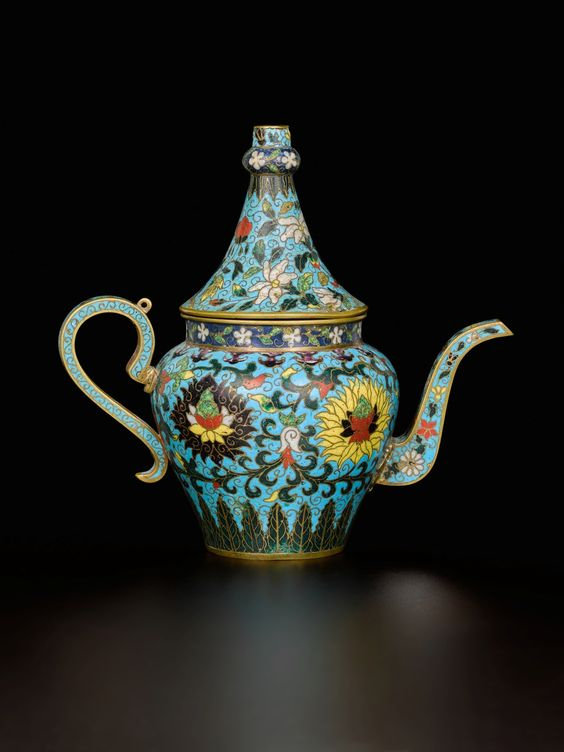

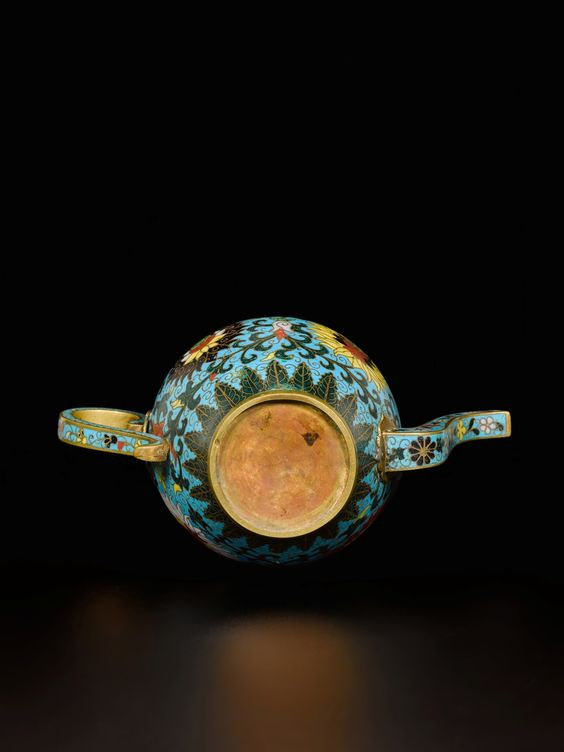
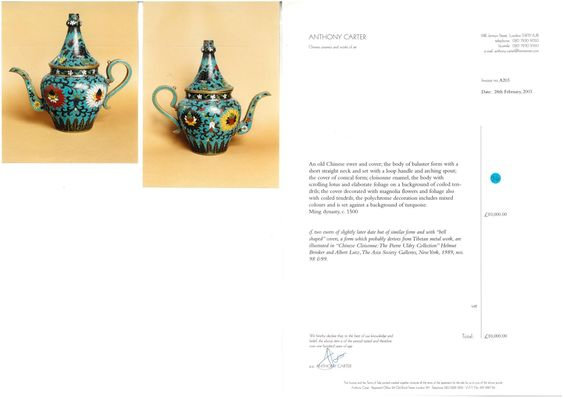
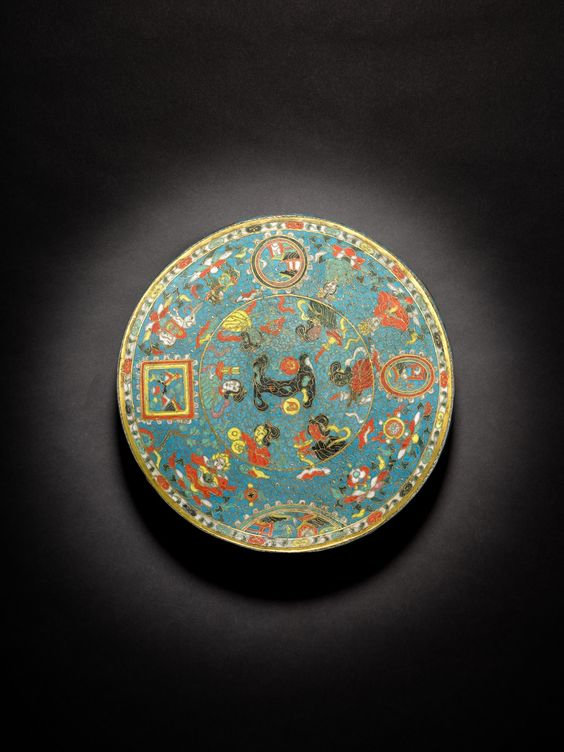
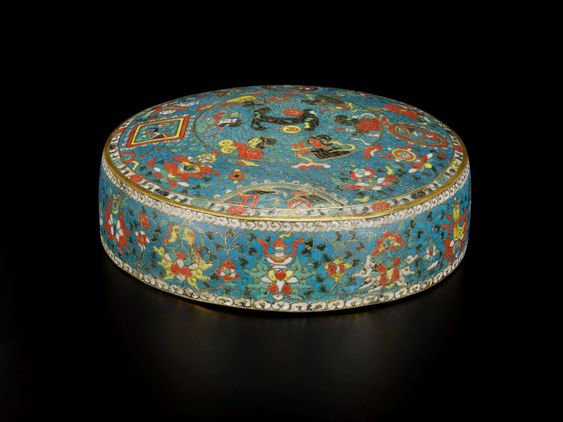
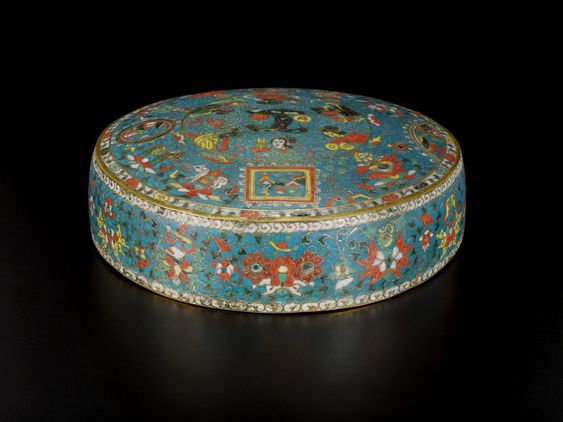
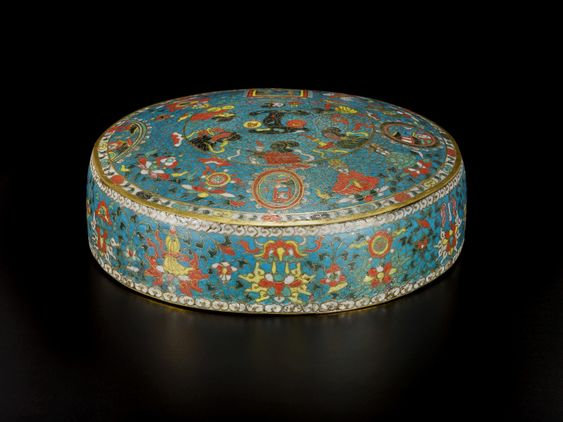
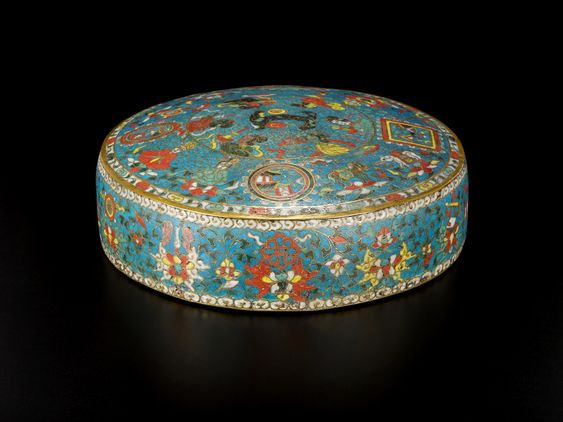

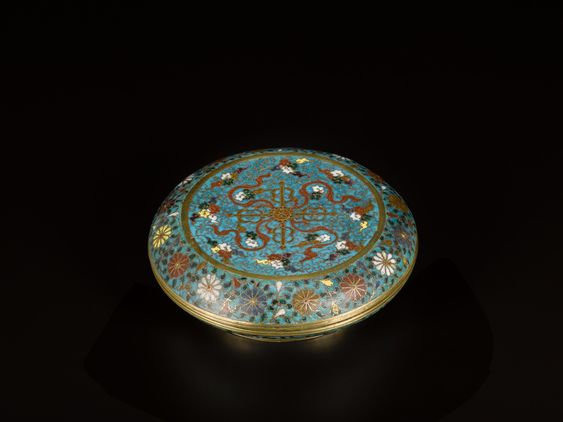
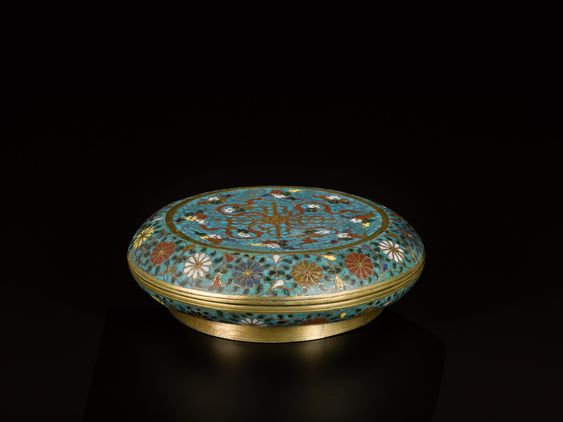


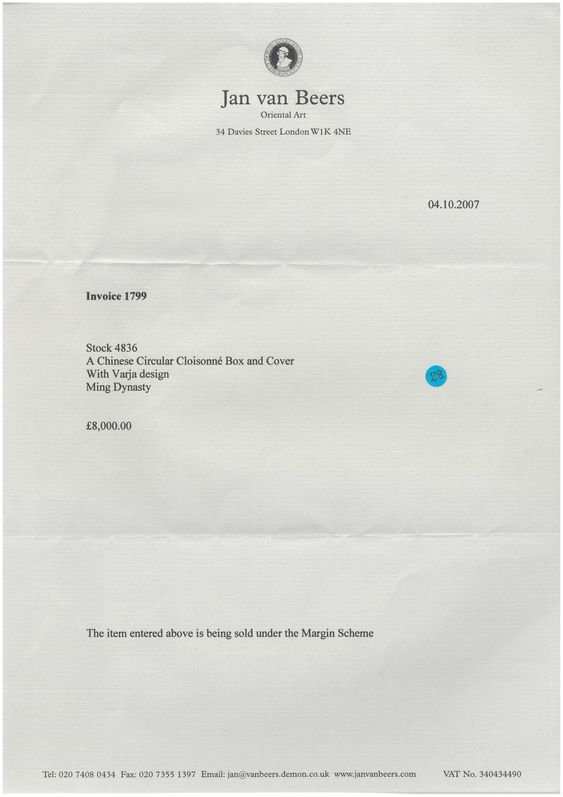
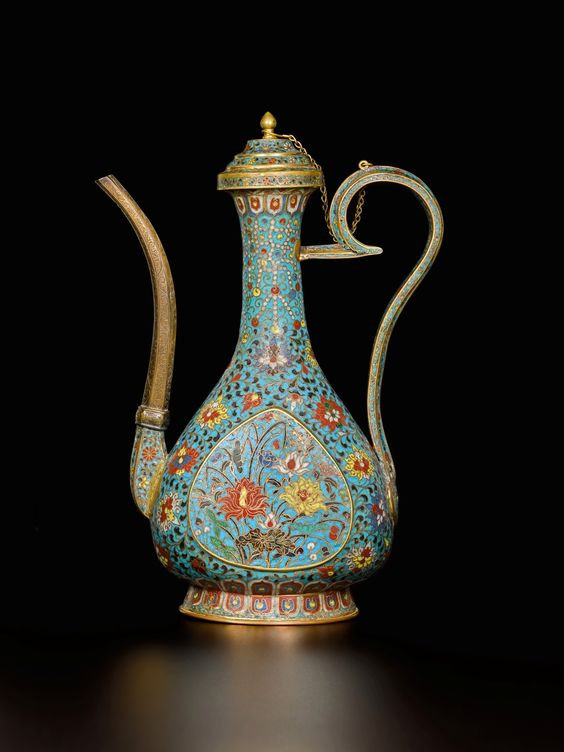
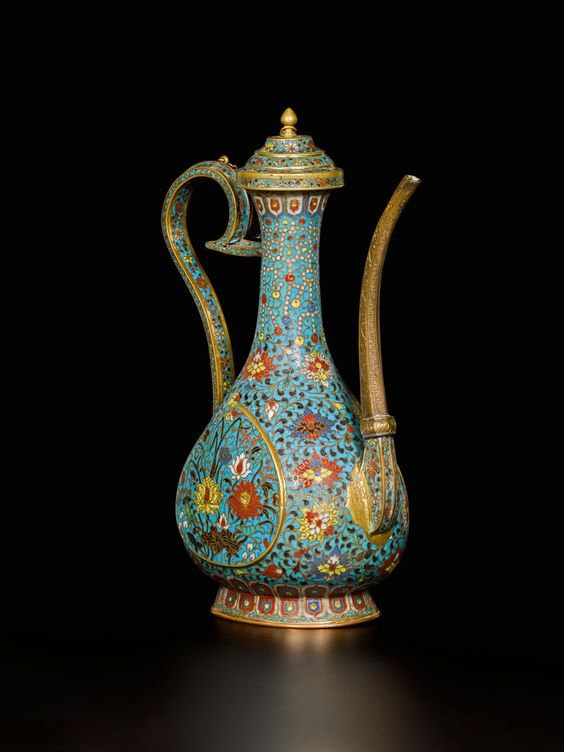
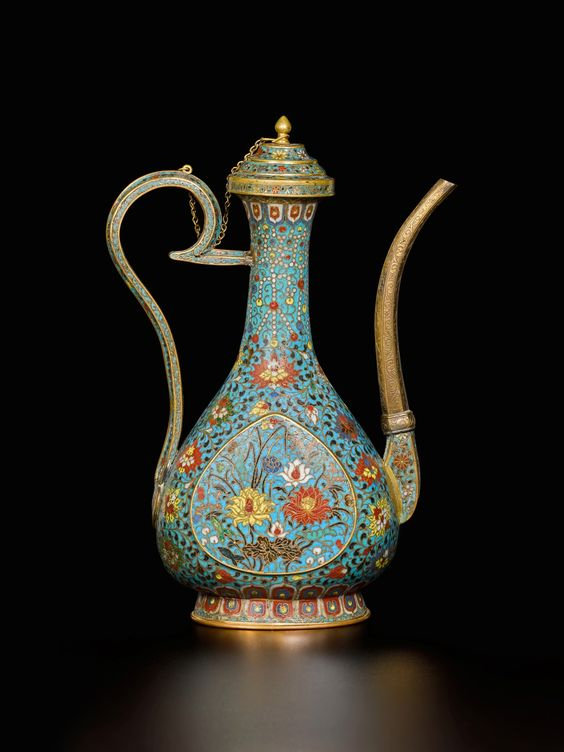
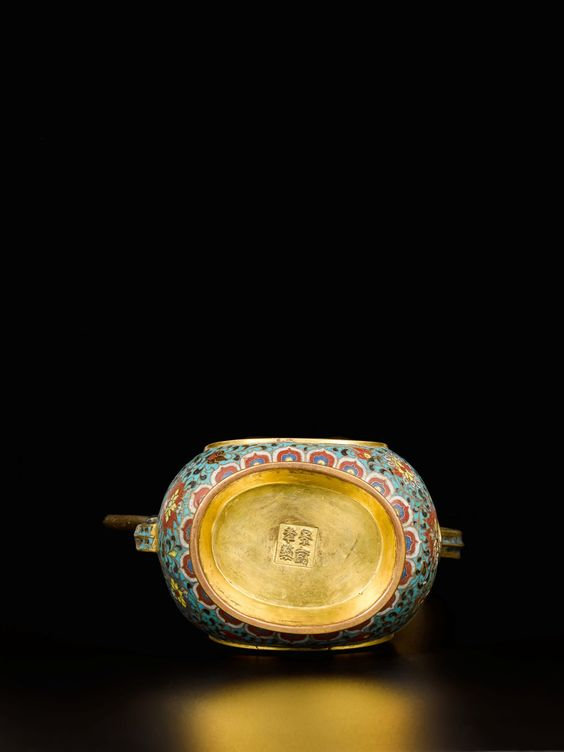

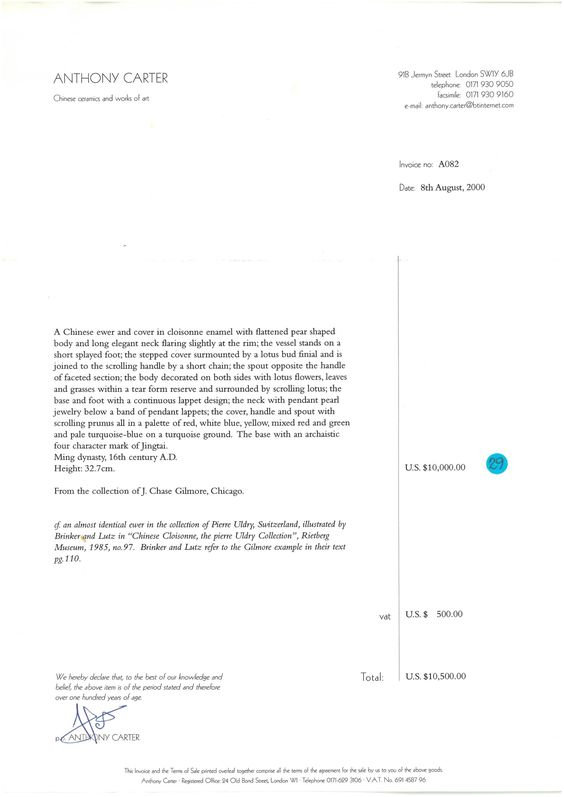

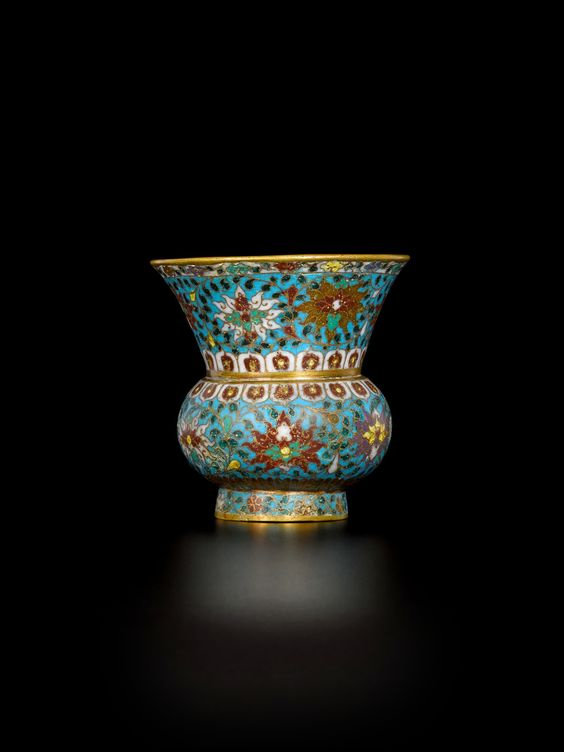
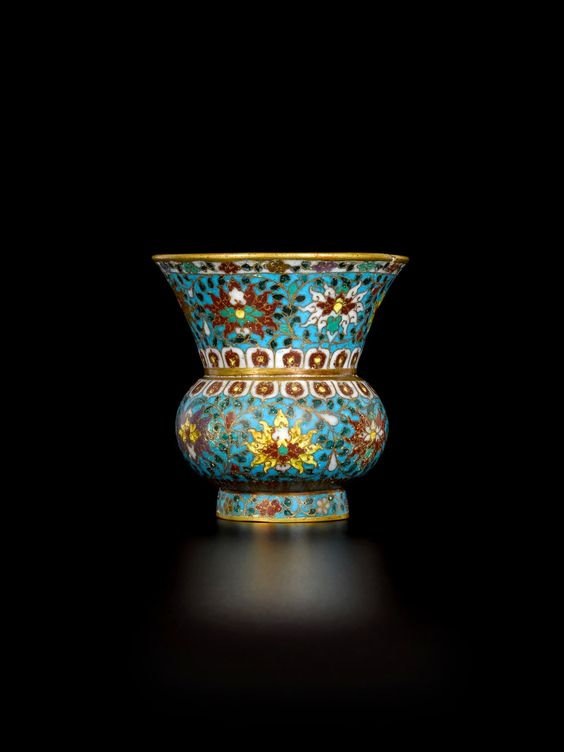







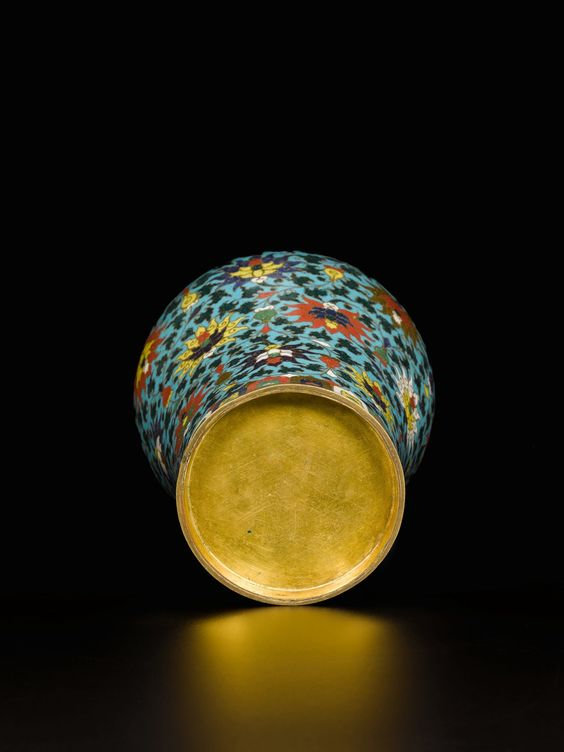
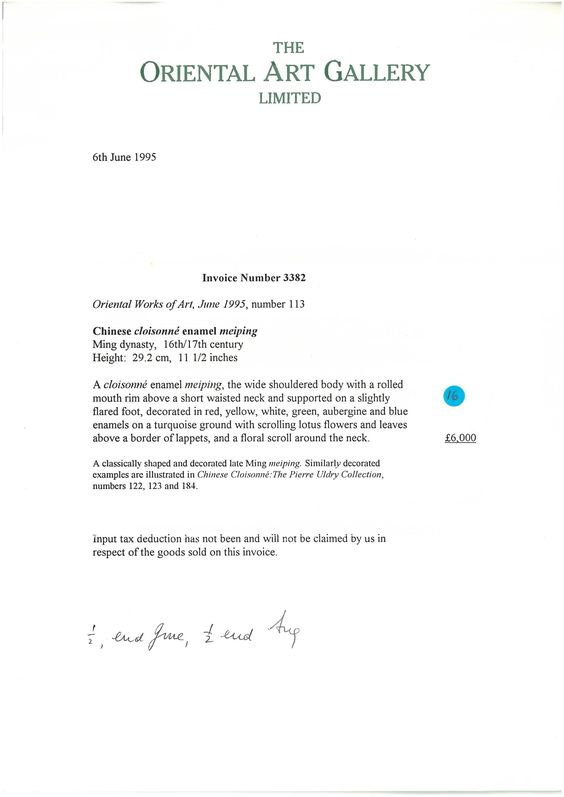
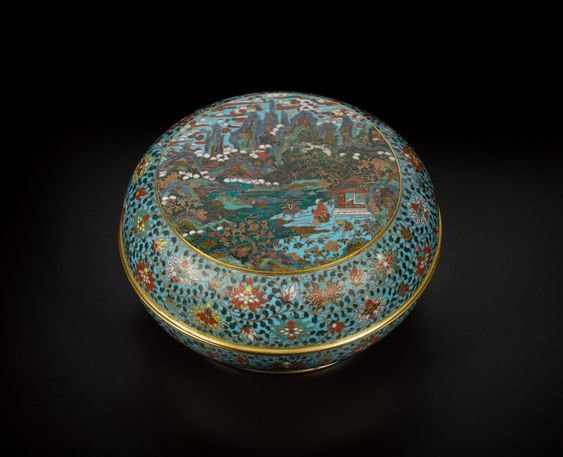
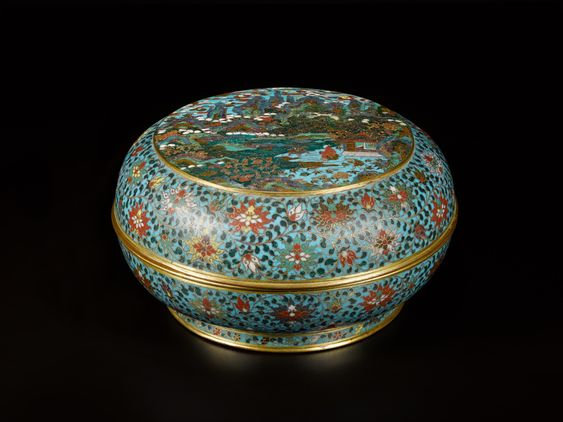
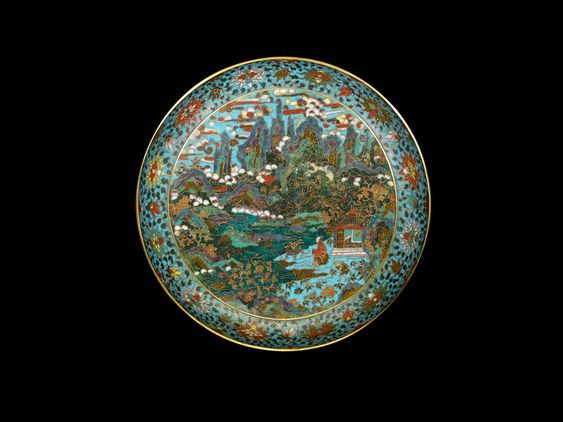
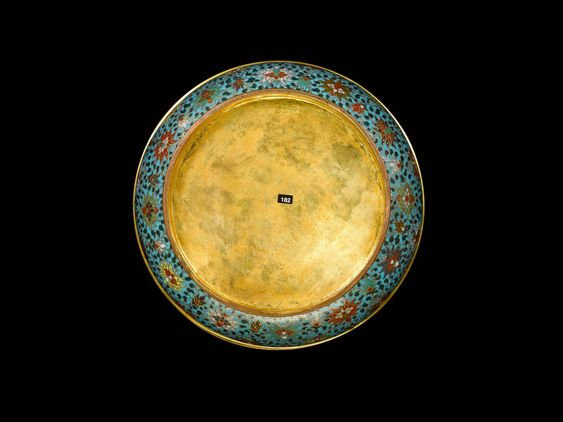


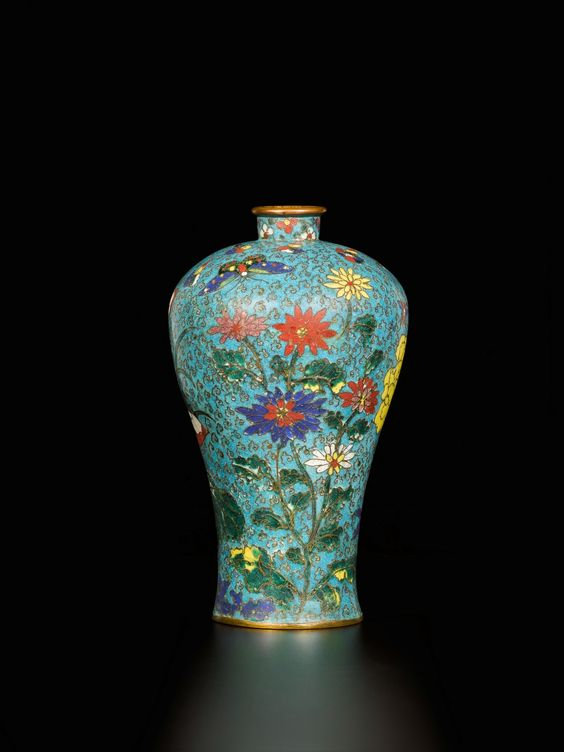




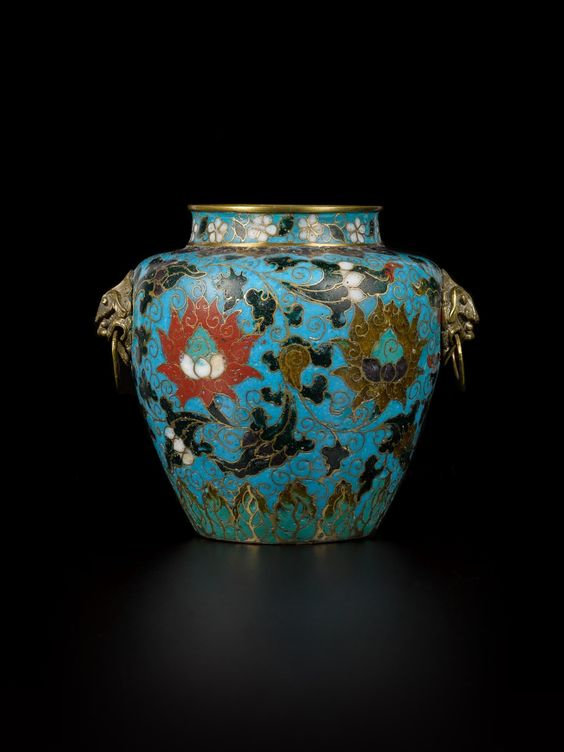


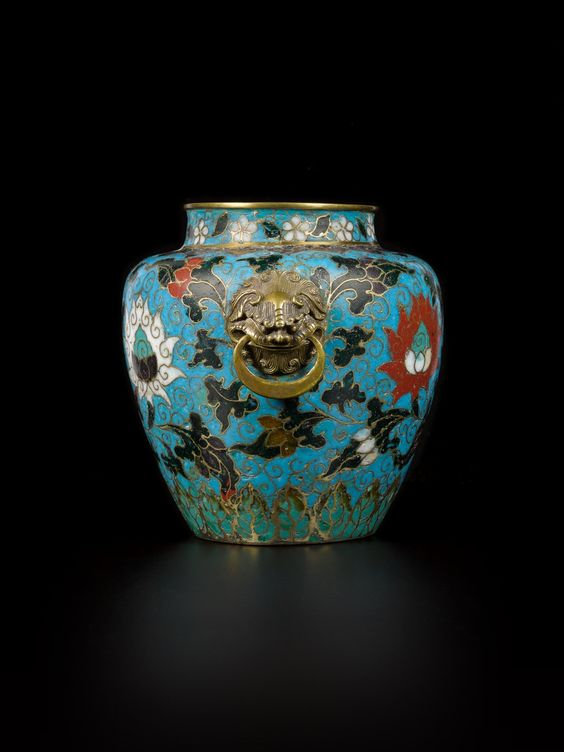
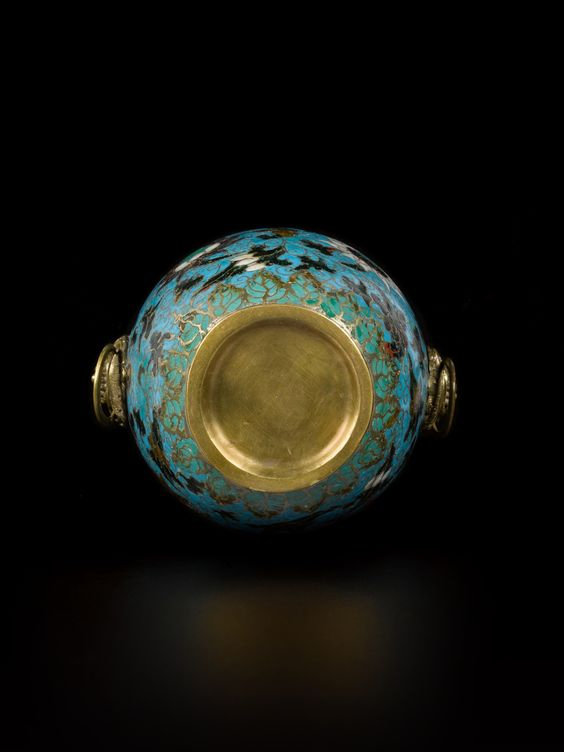
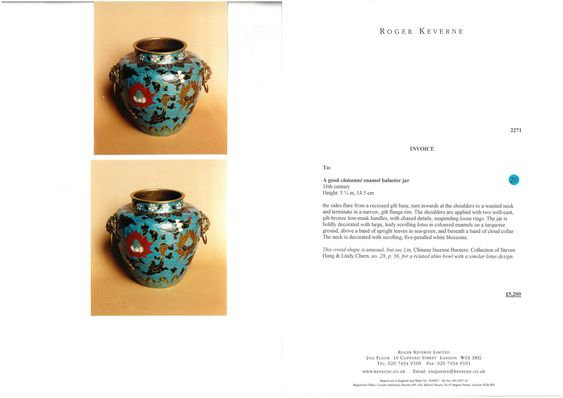
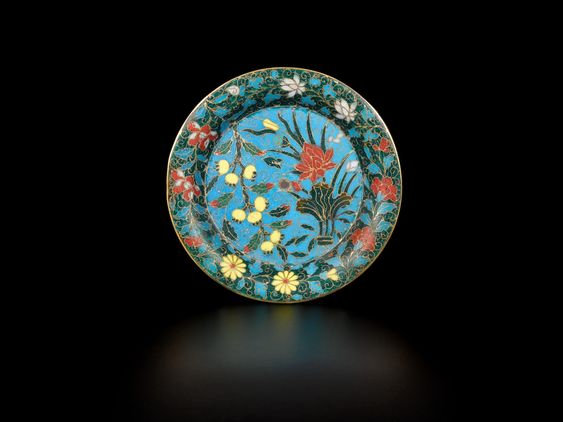
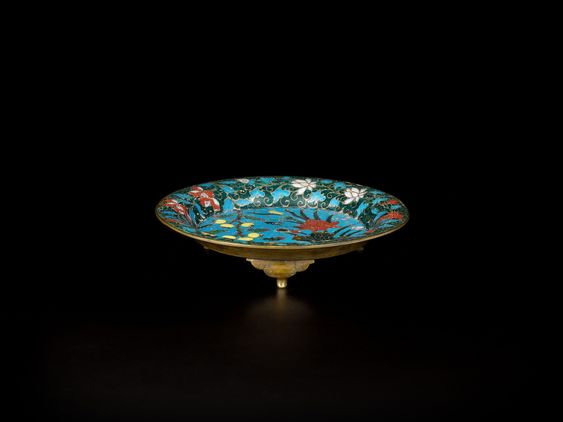
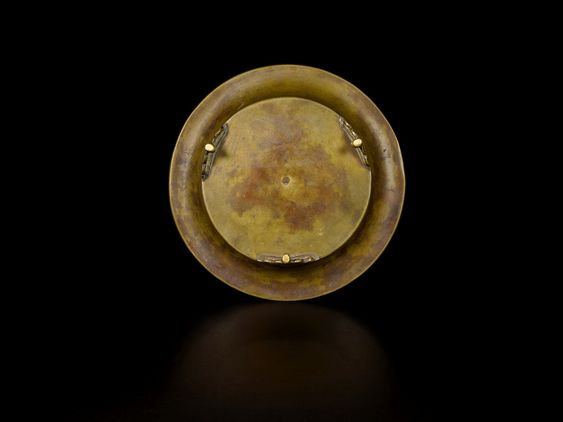

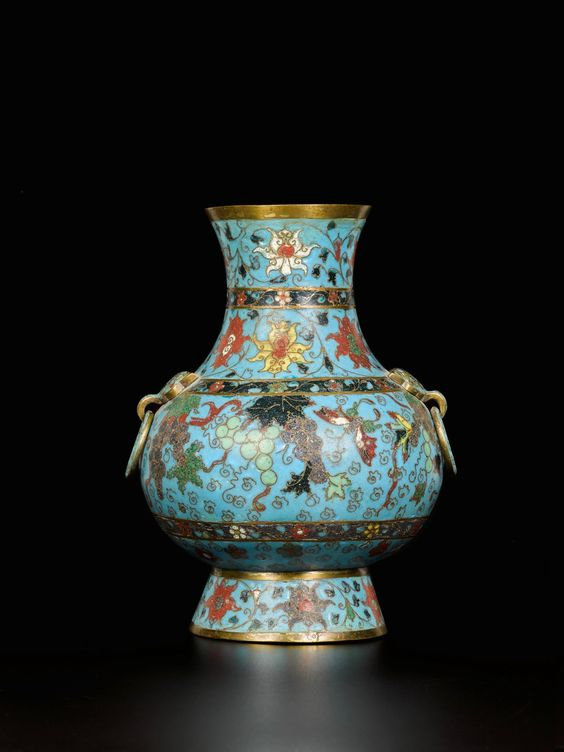
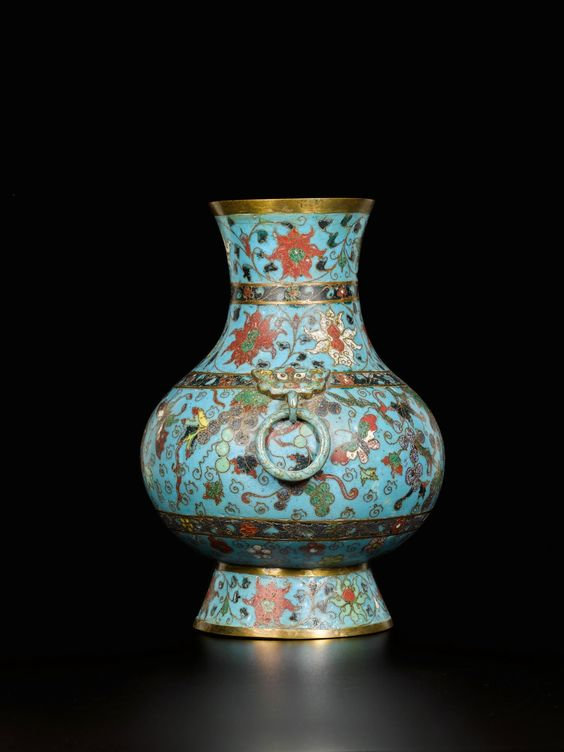

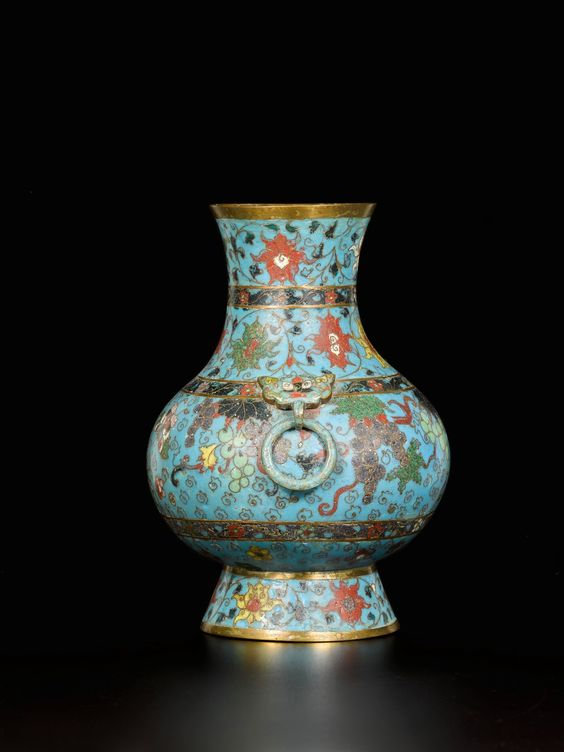


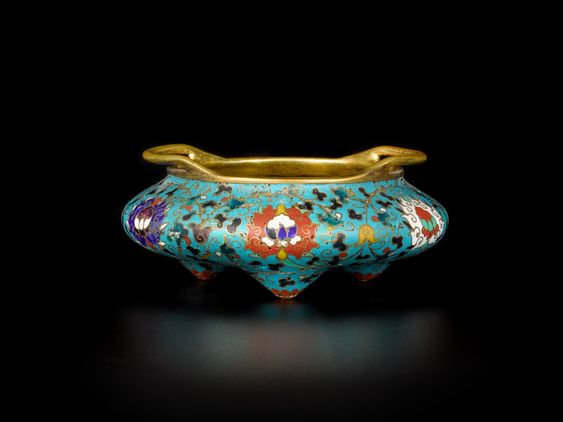
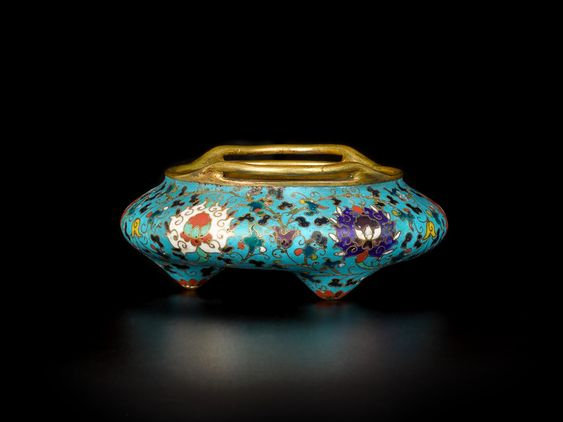
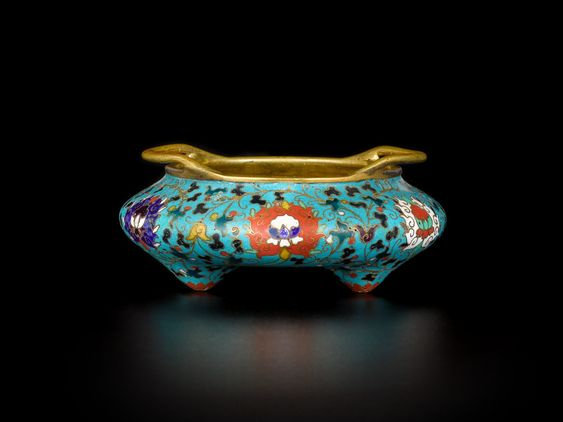
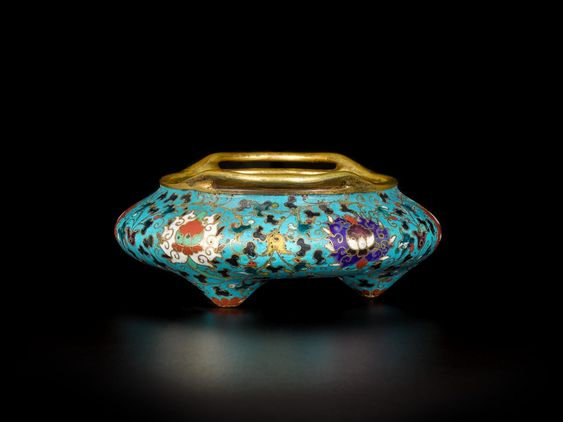
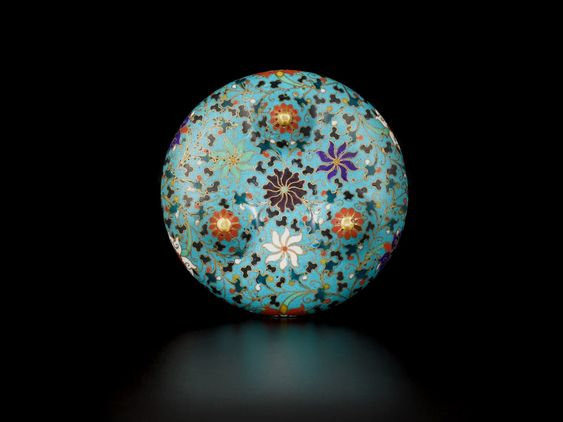
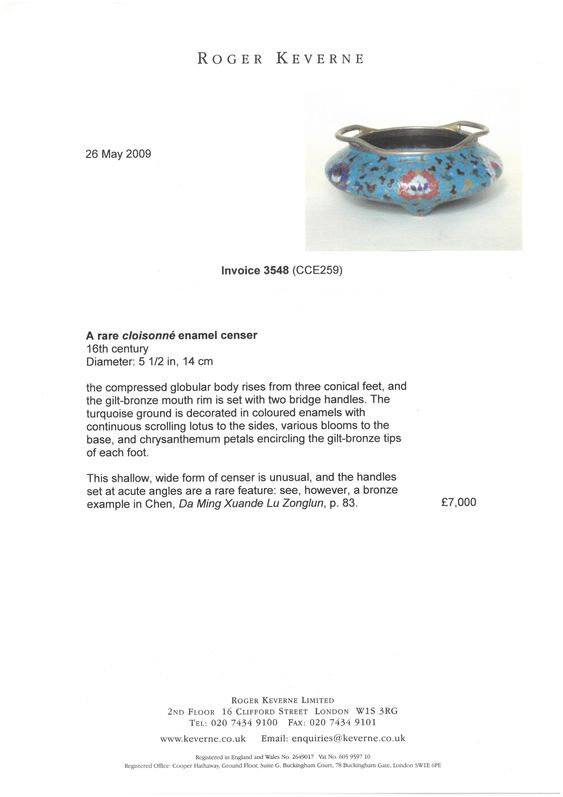
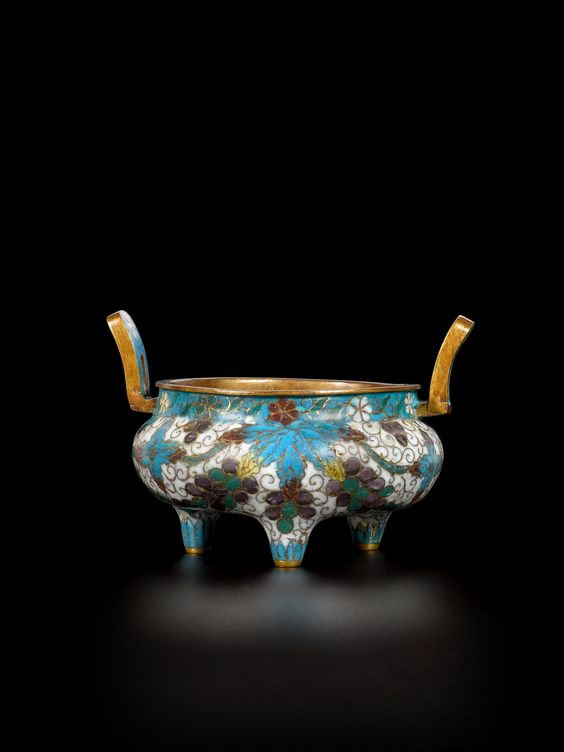

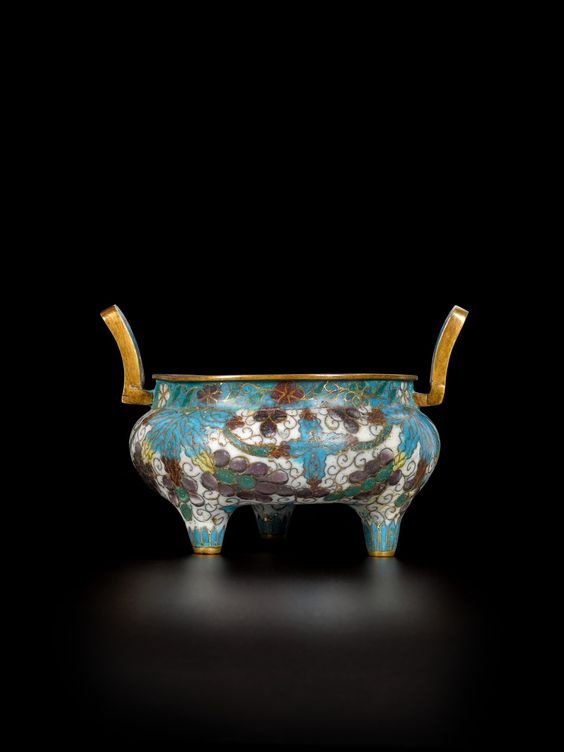

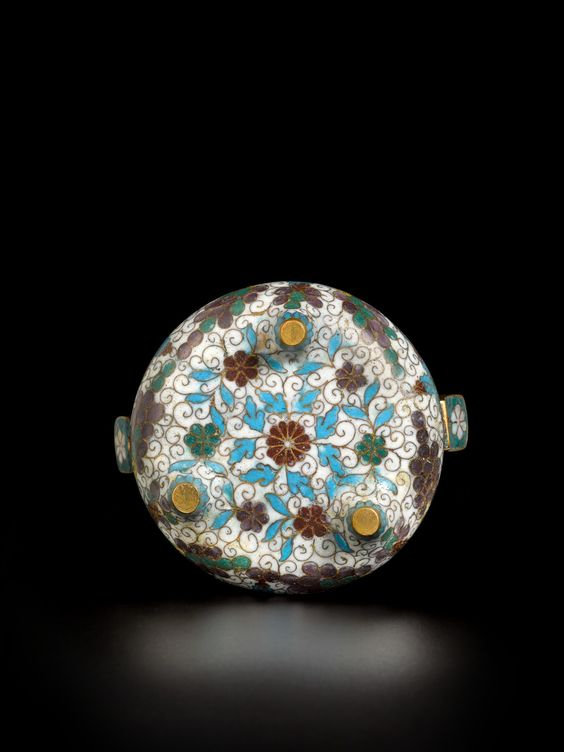

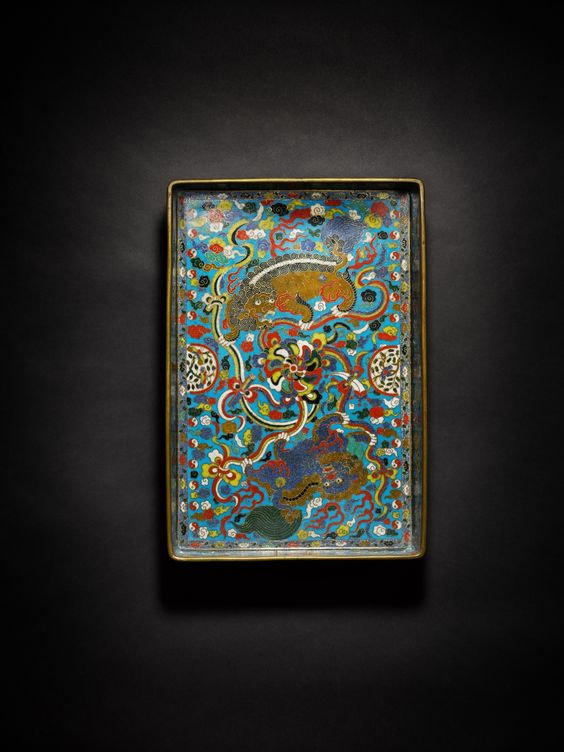

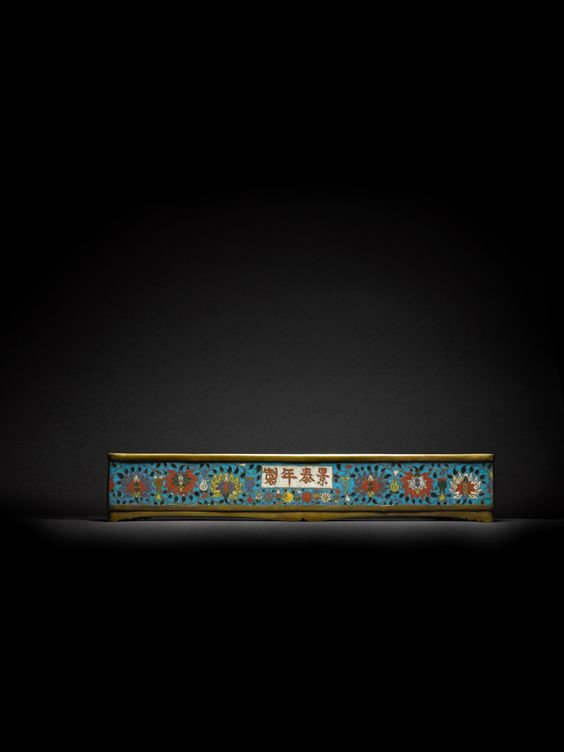
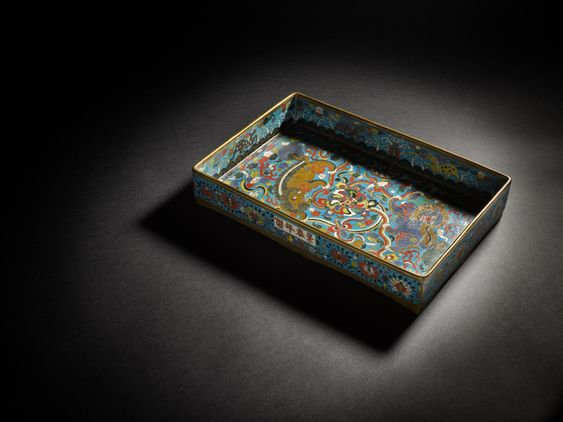
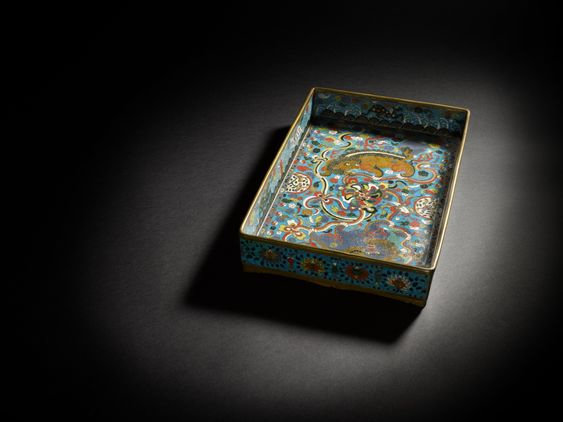

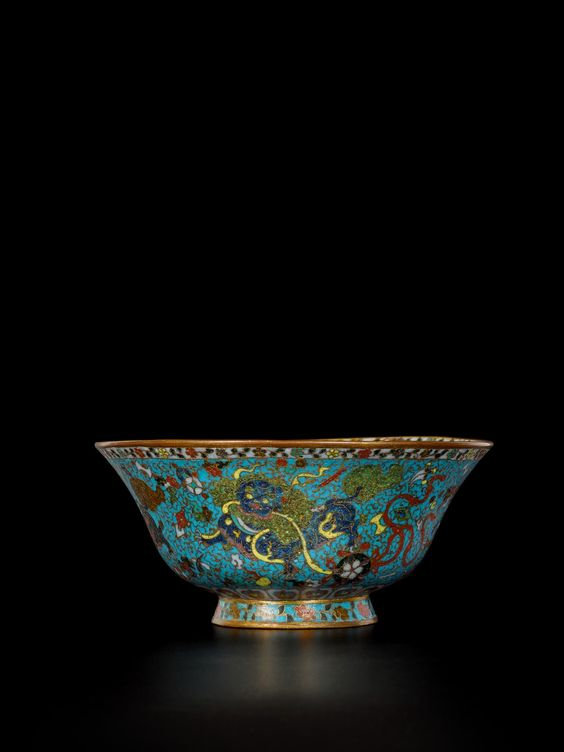


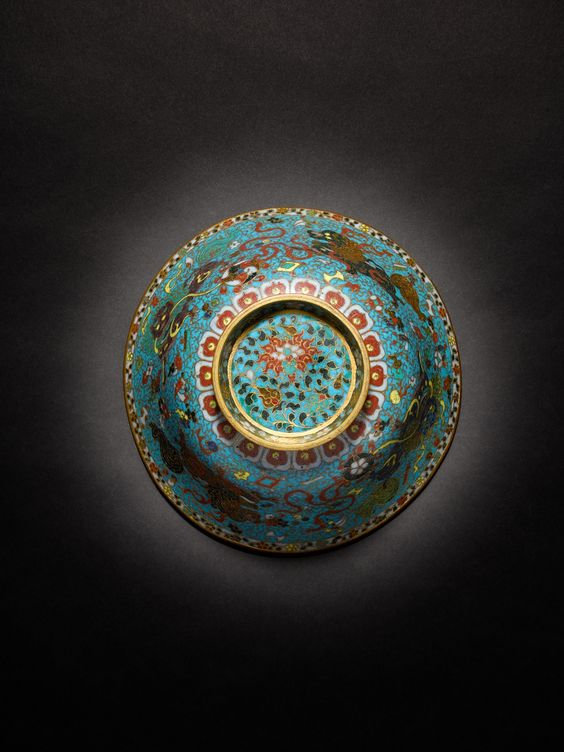
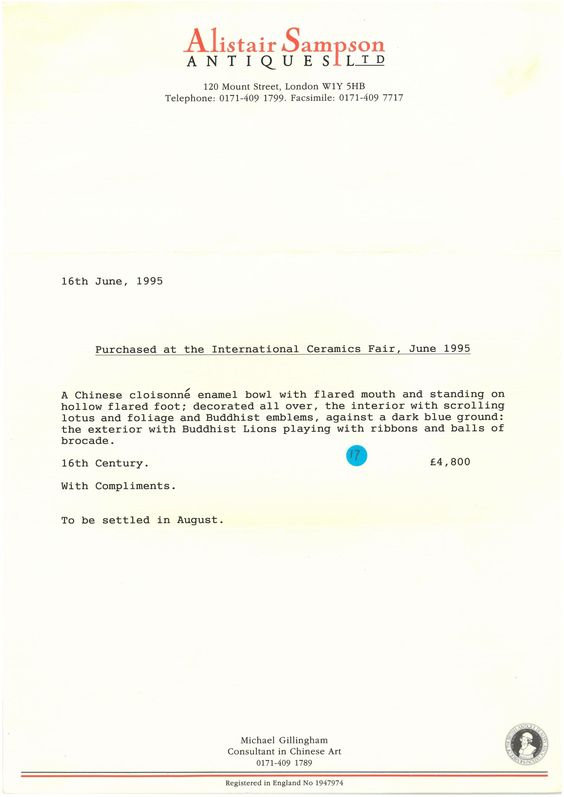
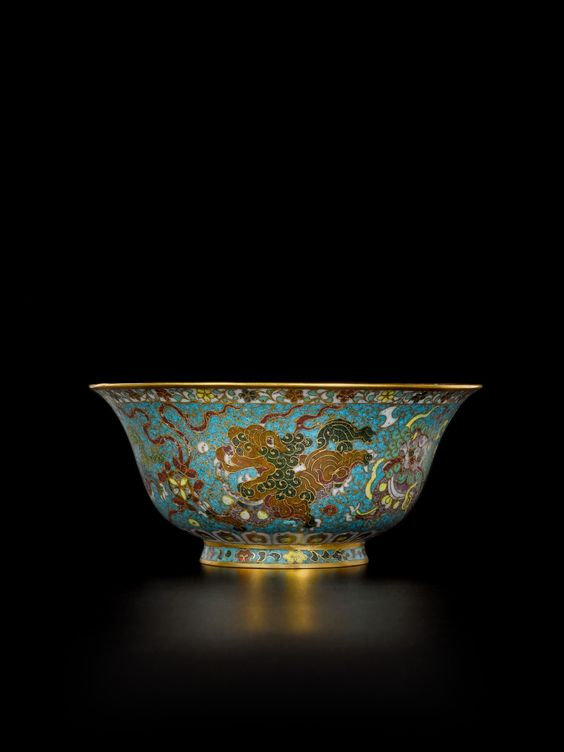

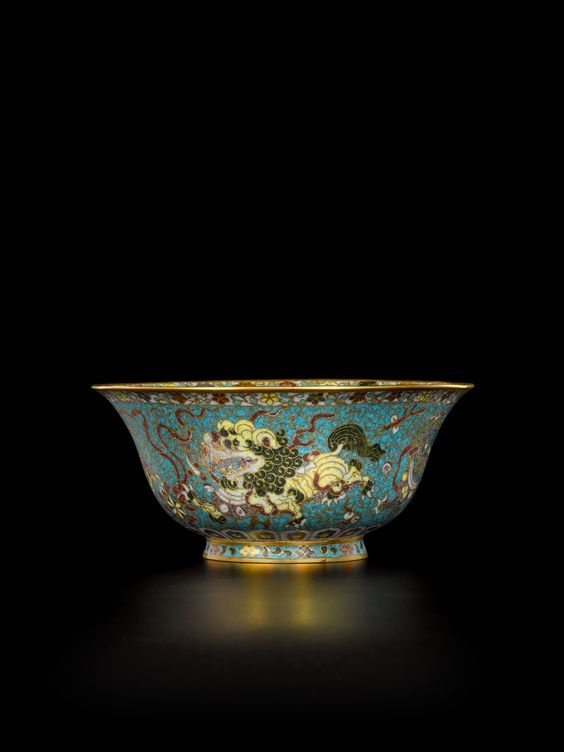
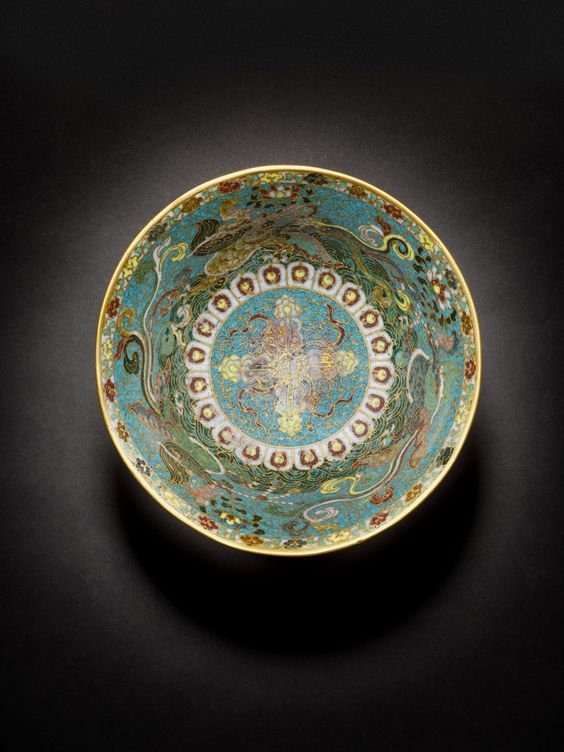
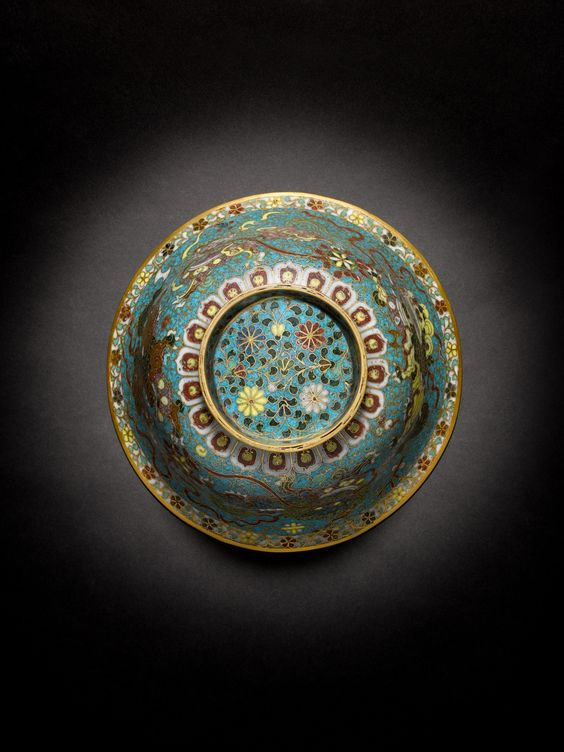
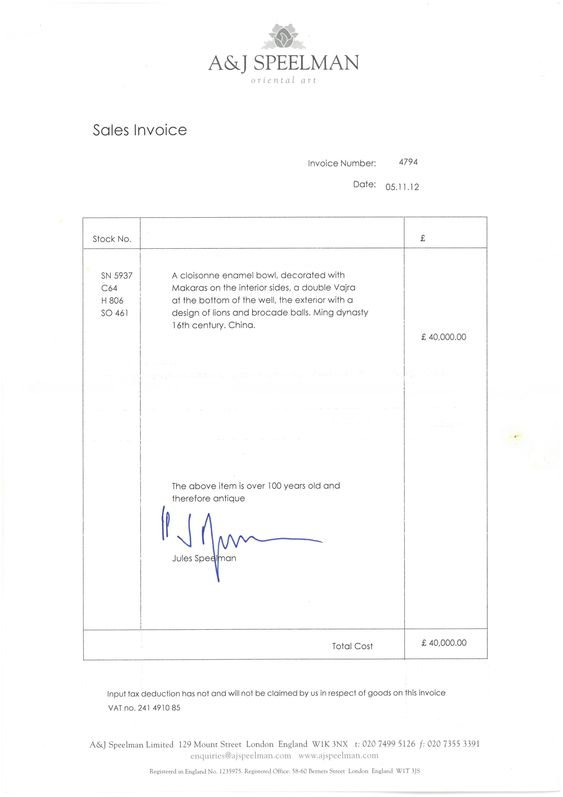

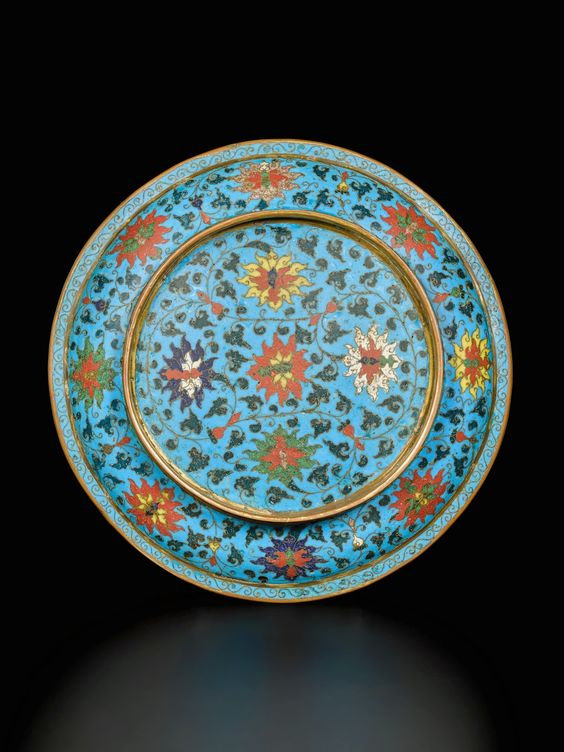

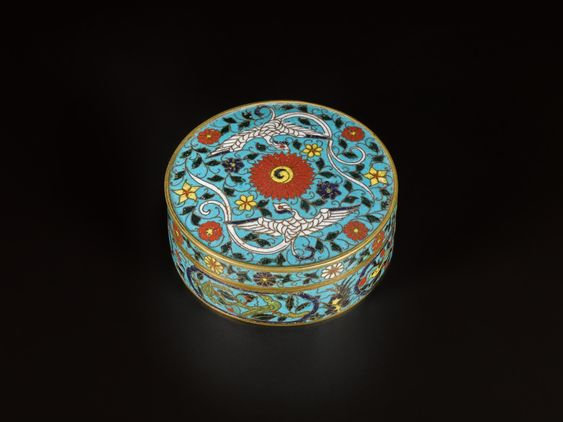
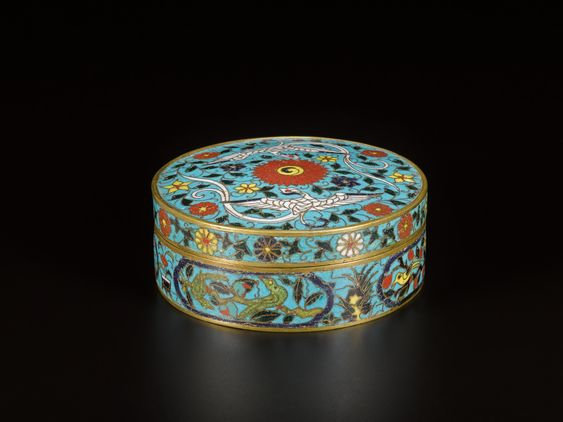
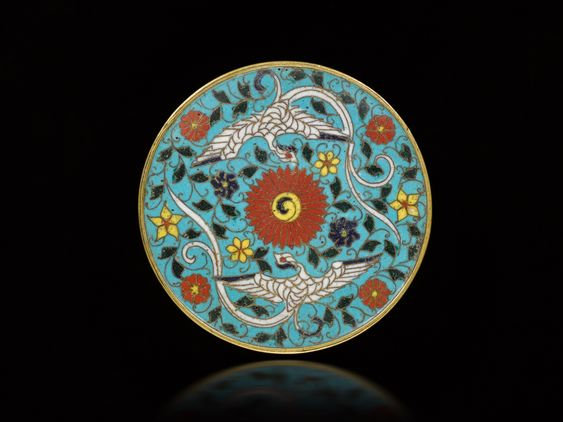

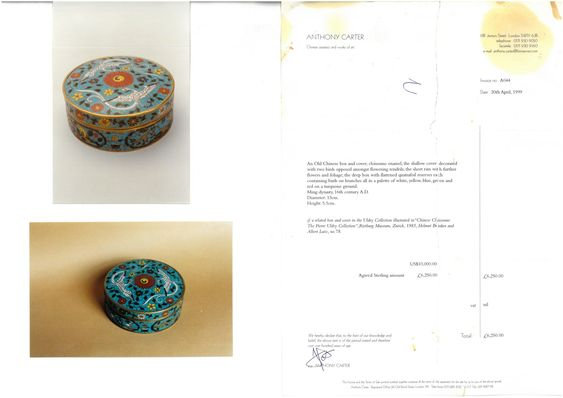
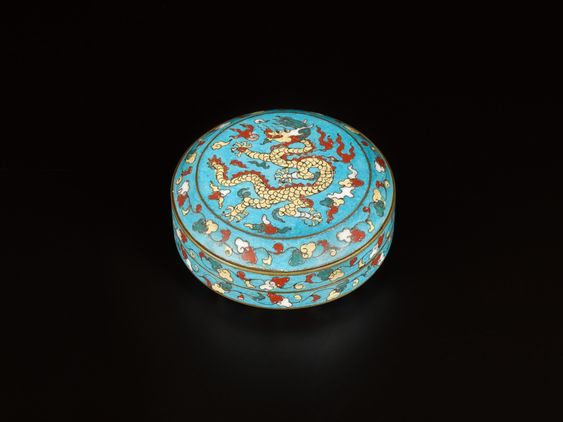


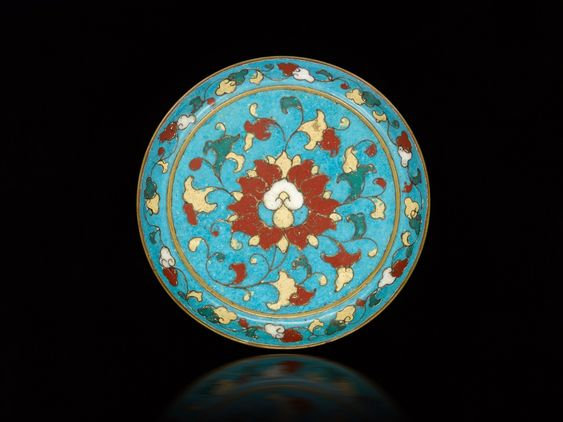
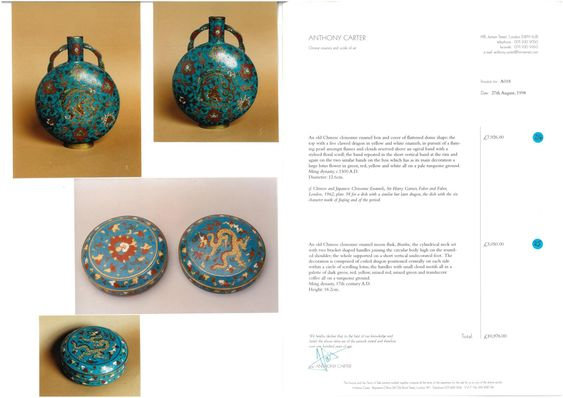
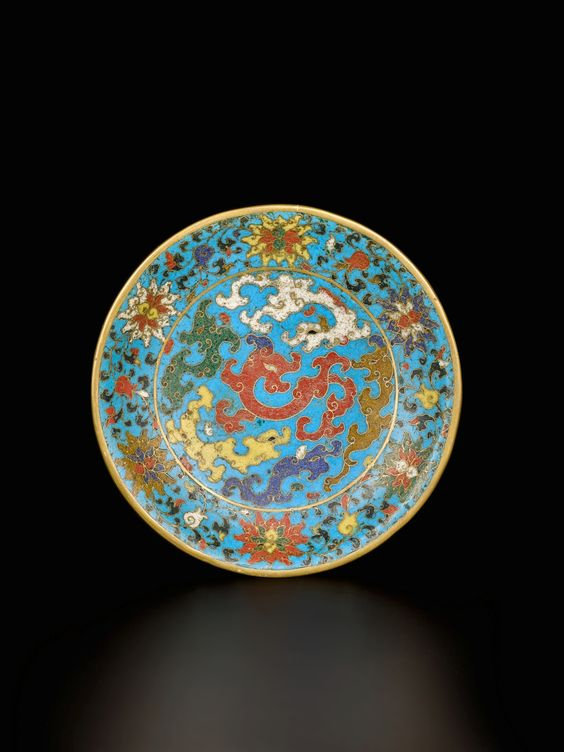




/image%2F1371349%2F20240509%2Fob_6e6516_438170925-1665692410867438-24872510158.jpg)
/image%2F1371349%2F20240506%2Fob_0ac115_441883710-1664459127657433-82227069902.jpg)
/image%2F1371349%2F20240506%2Fob_d2d810_441853969-1664462427657103-87847731357.jpg)
/image%2F1371349%2F20240506%2Fob_d57c6b_441421099-1663668671069812-87585335785.jpg)